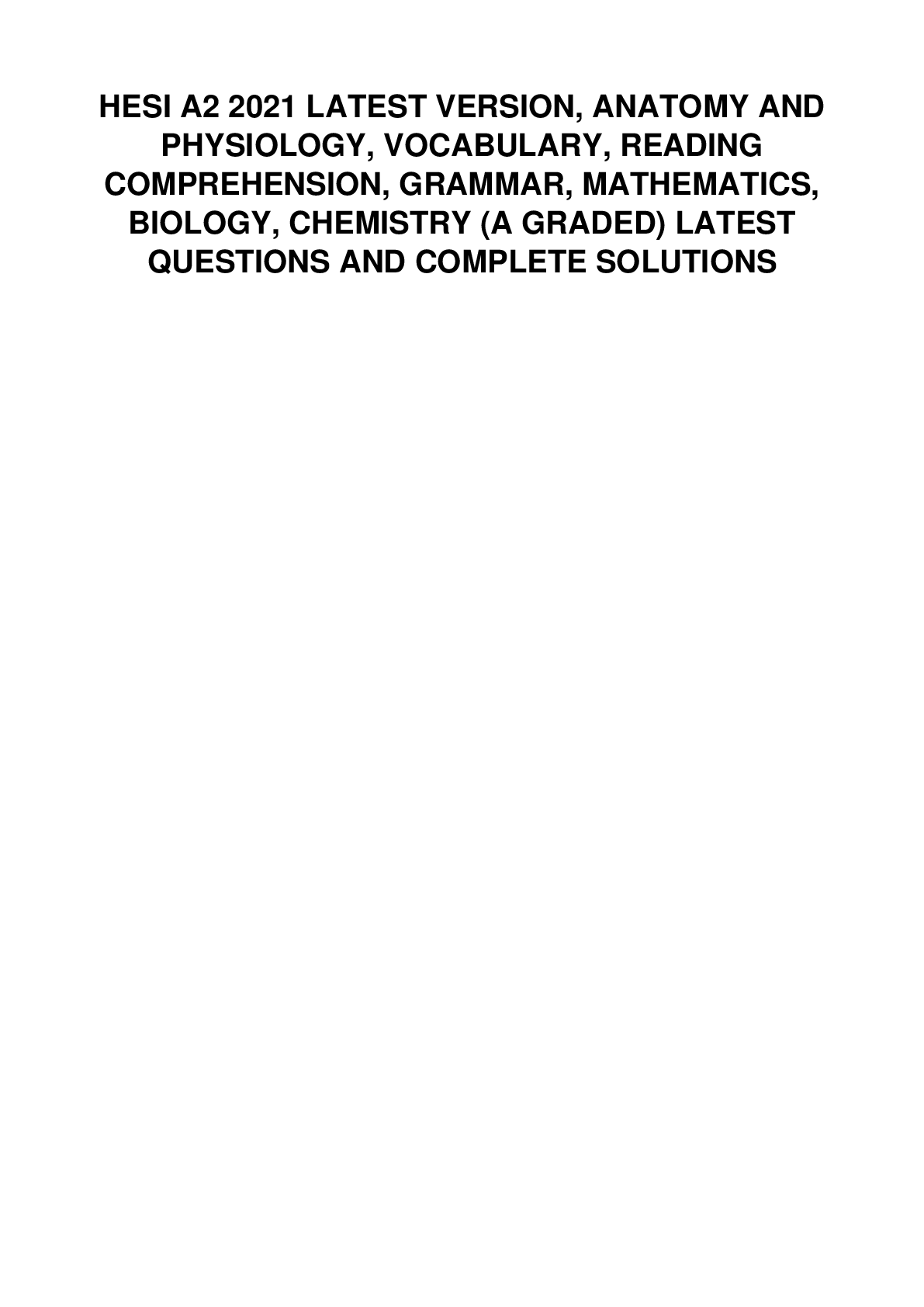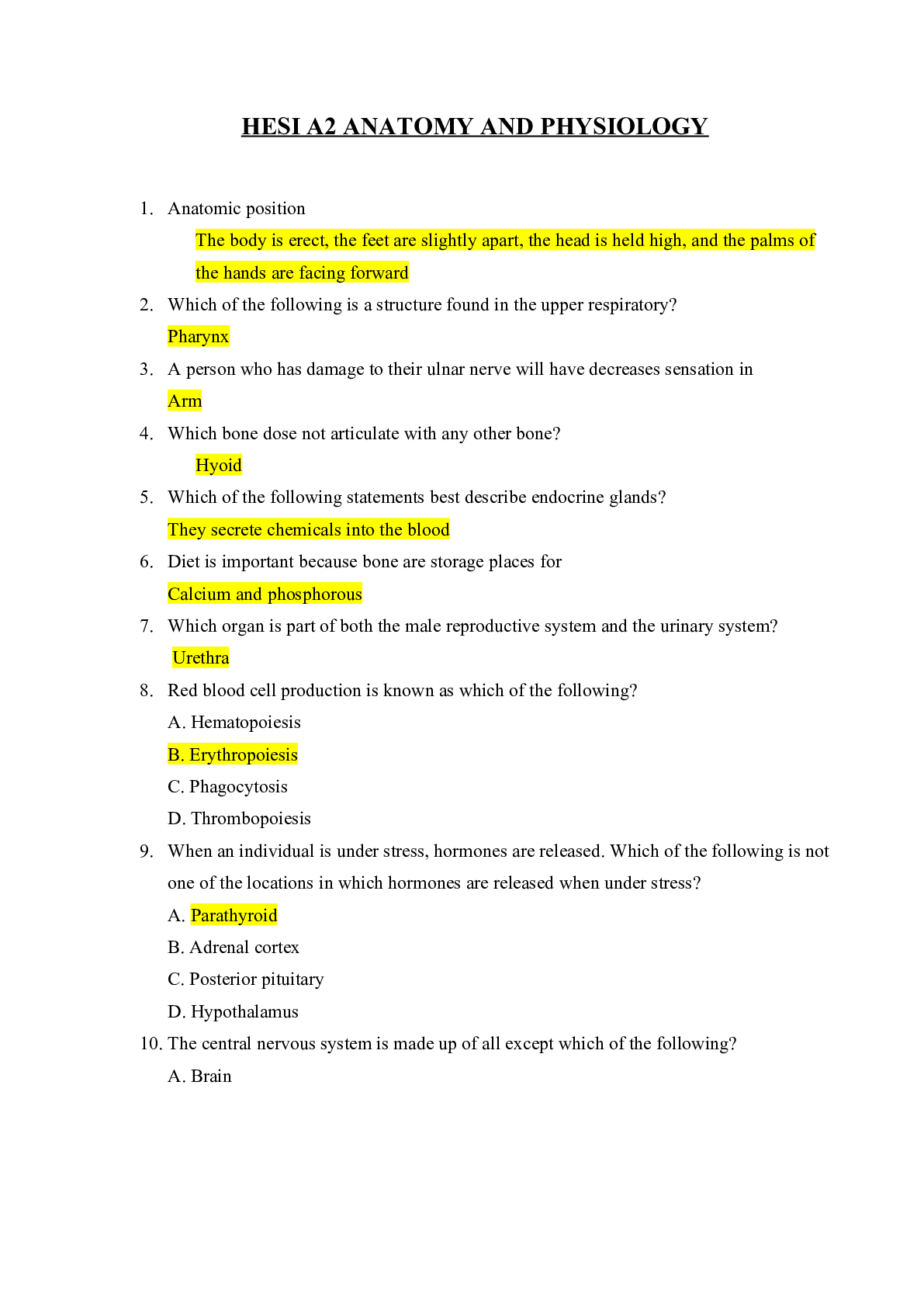HESI A2 Anatomy and Physiology V2
Document Content and Description Below
HESI A2 Anatomy and Physiology V2-1. Which of the following hormones decreases the concentration of blood glucose? A. insulin B. glucagon C. growth hormone D. glucocorticoids 2. Which structu... re controls the hormones secreted by the pituitary gland? A. hypothalamus B. adrenal gland C. testes D. pancreas 3. How much of a female’s blood volume is composed of red blood cells? A. 10% B. 25% C. 40% D. 70% 4. Which type of cholesterol is considered to be the best for health? A. LDL B. HDL C. VLDL D. VHDL 5. Where are the vocal cords located? A. bronchi B. trachea C. larynx D. epiglottis 6. Where does gas exchange occur in the human body? A. alveoli B. bronchi C. larynx D. pharynx 7. What mineral is responsible for muscle contractions? A. Chloride B. Sodium C. Calcium D. Magnesium 8. In which of the following locations would the urinary bladder and internal reproductive organs be found? A. Thoracic cavity B. Mediastinum C. Abdominal cavity D. Pelvic cavity 9. What separates the thoracic cavity from the abdominal cavity? A. Diaphragm B. Mediastinum C. Liver D. Lungs 10. Which of the following epithelial types is correctly matched with its major function? A. Simple squamous epithelium—secretion or absorption B. Stratified squamous epithelium—changes shape when stretched C. Stratified squamous epithelium—diffusion D. Simple columnar epithelium—secretion or absorption 11. A tissue examined under the microscope exhibits the following characteristics: cells found on internal surface of stomach, no extracellular matrix, cells tall and thin, no blood vessels in the tissue. What type of tissue is this? A. Epithelial B. Connective C. Muscle D. Cartilage E. Nervous 12. Nerve tissue is composed of neurons and connective tissue cells that are referred to as which of the following? A. Osteoblasts B. Neuroglia C. Osteocytes D. Arterioles 13. Which tissue serves as the framework of the body by providing support and structure for the organs? A. Epithelial B. Connective C. Nervous D. Muscle 14. What is the basic unit of life and the building block of tissues and organs? A. Atom B. Organelle C. Cell D. DNA 15. What is the exchange of gases between the atmosphere and the blood through the alveoli called? A. External respiration B. Internal respiration C. Inhalation D. Cellular respiration 16. In order for inhalation to occur, what must happen? A. Contraction of the diaphragm, which decreases the volume of the chest cavity and draws air into the lungs B. Contraction of the diaphragm, which enlarges the chest cavity and draws air into the lungs C. Recoil of the lungs as the respiratory muscles contract, and the thorax decreases in size D. Recoil of the lungs as the respiratory muscles relax, and the thorax decreases in size 17. Most of the carbon dioxide in the blood does which of the following? A. It is carried in solution or bound to blood proteins. B. It is carried on hemoglobin. C. It is converted to bicarbonate ions by carbonic anhydrase within red blood cells. D. It is converted to bicarbonate ions by carbonic anhydrase within the plasma. 18. How does the trachea remain open like a hollow tube? A. Air pressure inside keeps it open. [Show More]
Last updated: 1 year ago
Preview 1 out of 15 pages
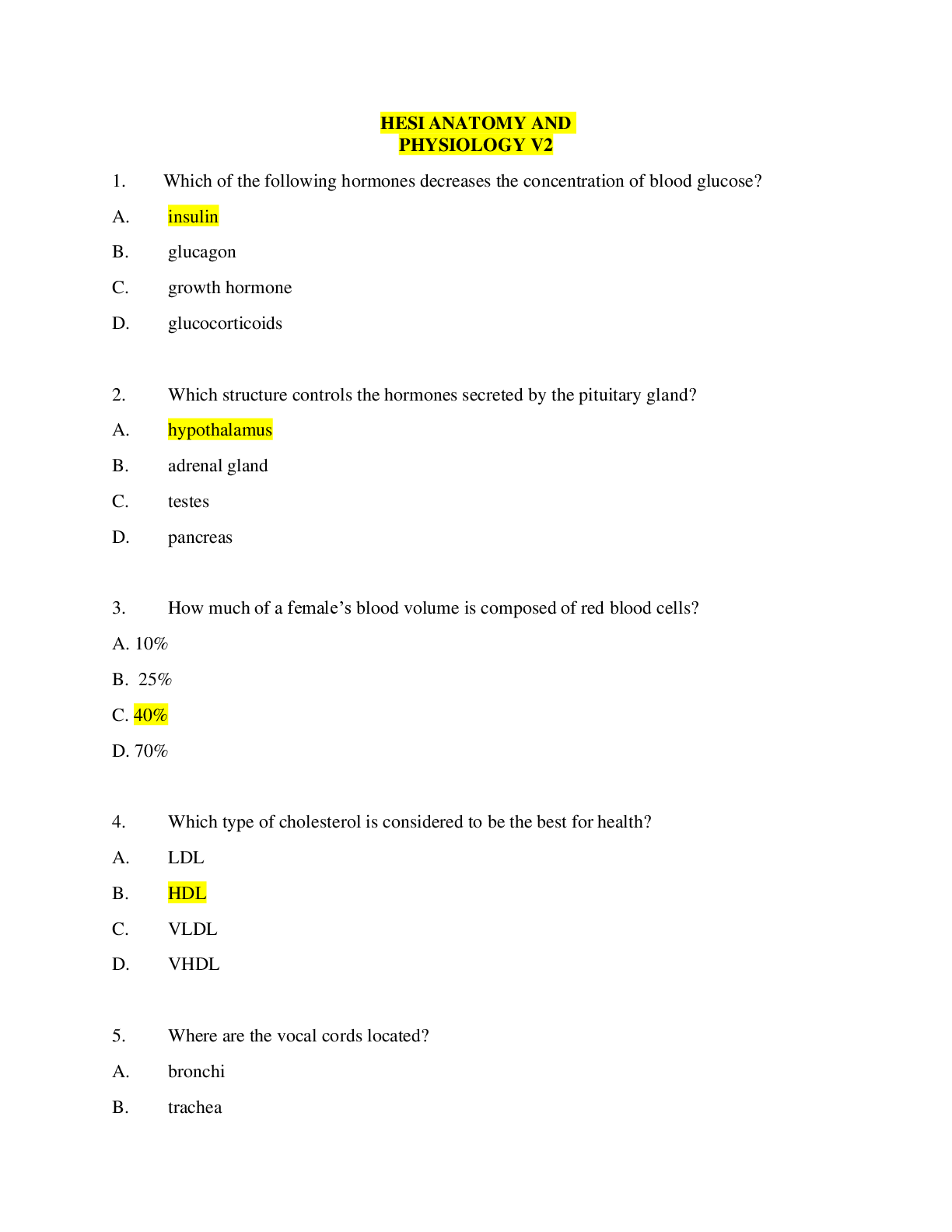
Also available in bundle (2)
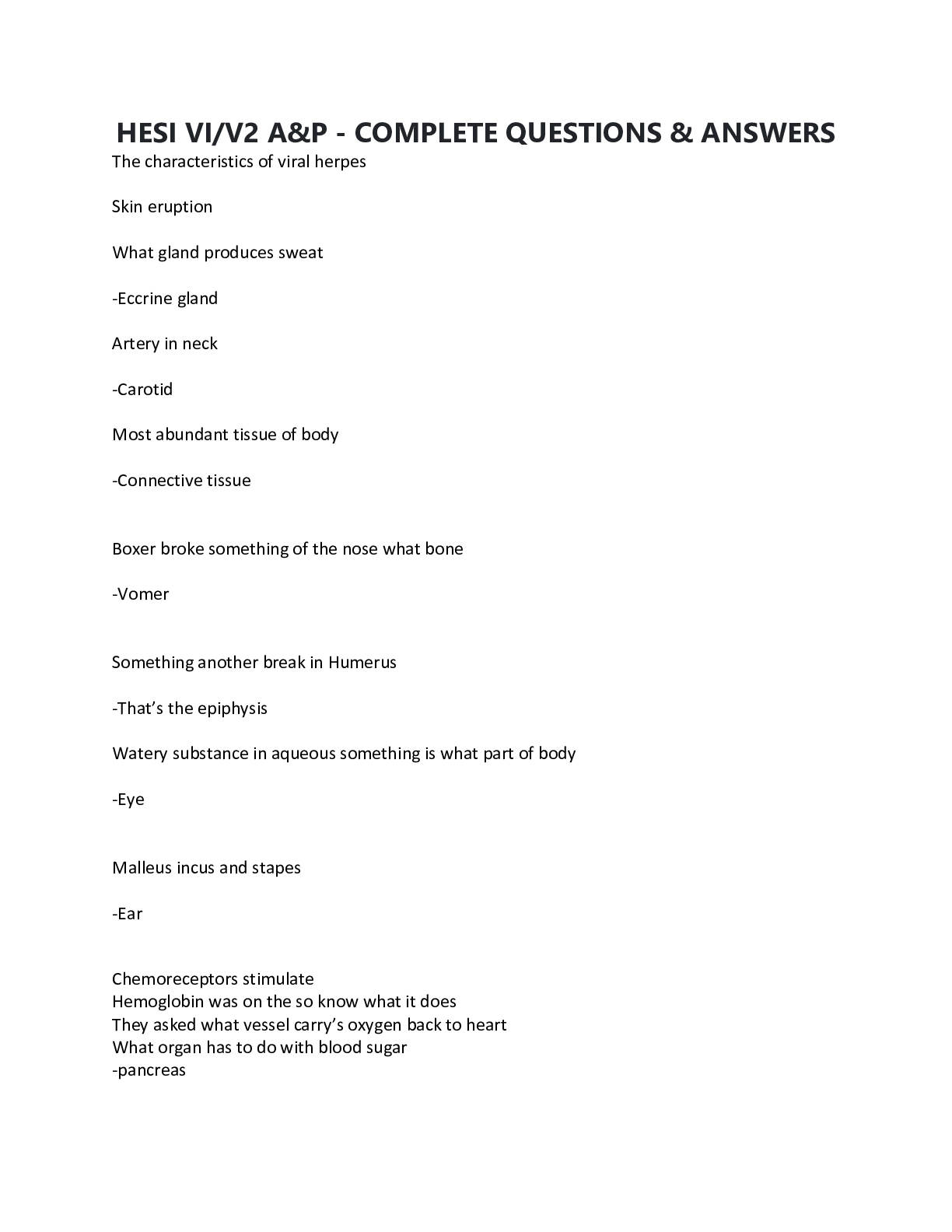
HESI BUNDLE | EVERYTHING ABOUT HESI EXIT, HESI LPN/HESI EXIT FOR ARPN physical assessments/From Study Guides to Real Actual Exams. Comprehensive HESI BUNDLE, ALL EXAMS EVER APPEARED ON HESI. ALL ANSWERS VERIFIED, A GUIDE!
HESI BUNDLE | EVERYTHING ABOUT HESI EXIT, HESI LPN/HESI EXIT FOR ARPN physical assessments/From Study Guides to Real Actual Exams. Comprehensive HESI BUNDLE, ALL EXAMS EVER APPEARED ON HESI. ALL ANSWE...
By PROF 1 year ago
$56.5
148

HESI A2 Bundle, Updated
HESI A2 Bundle, Updated
By PROF 2 years ago
$45.5
4
Reviews( 0 )
Document information
Connected school, study & course
About the document
Uploaded On
Jul 30, 2021
Number of pages
15
Written in
Additional information
This document has been written for:
Uploaded
Jul 30, 2021
Downloads
0
Views
63

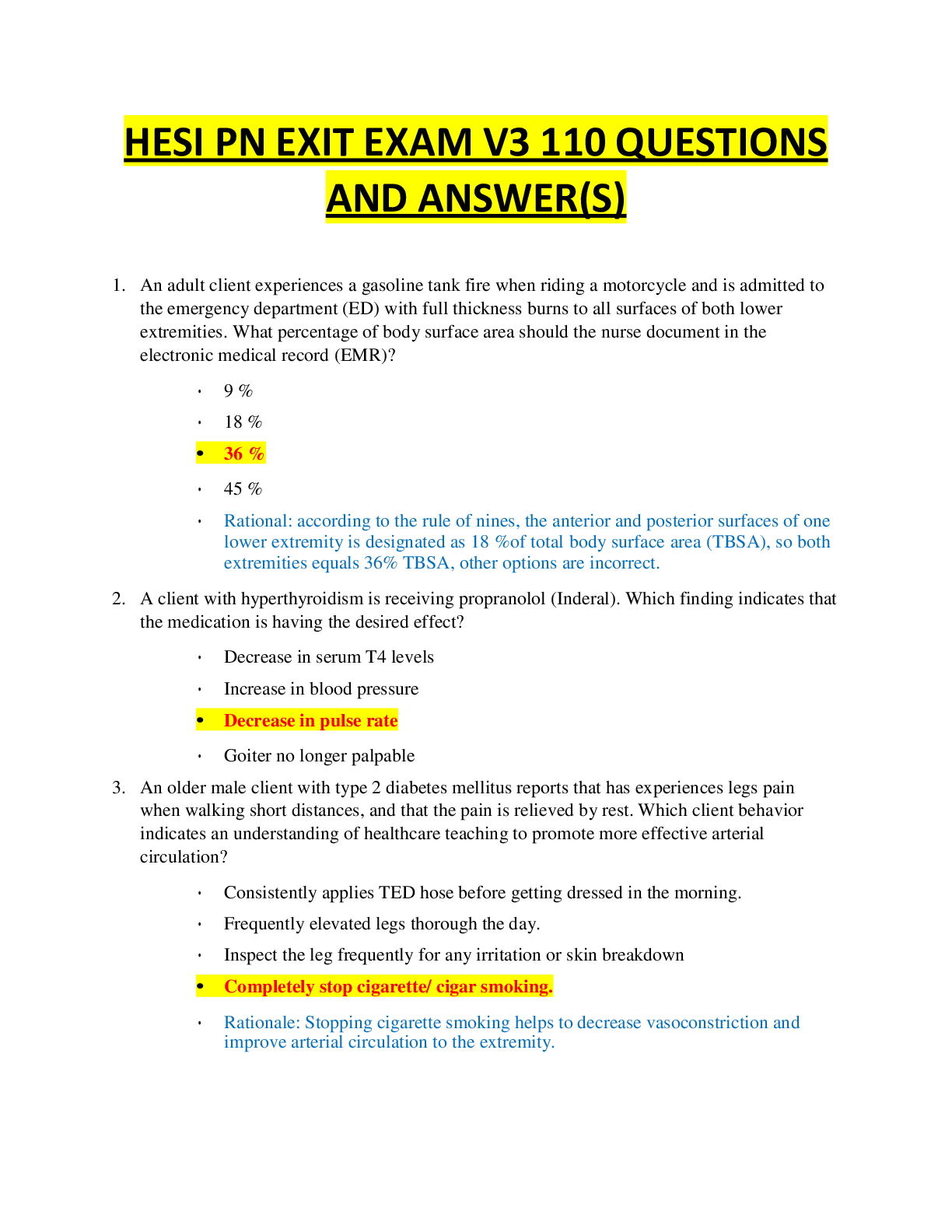
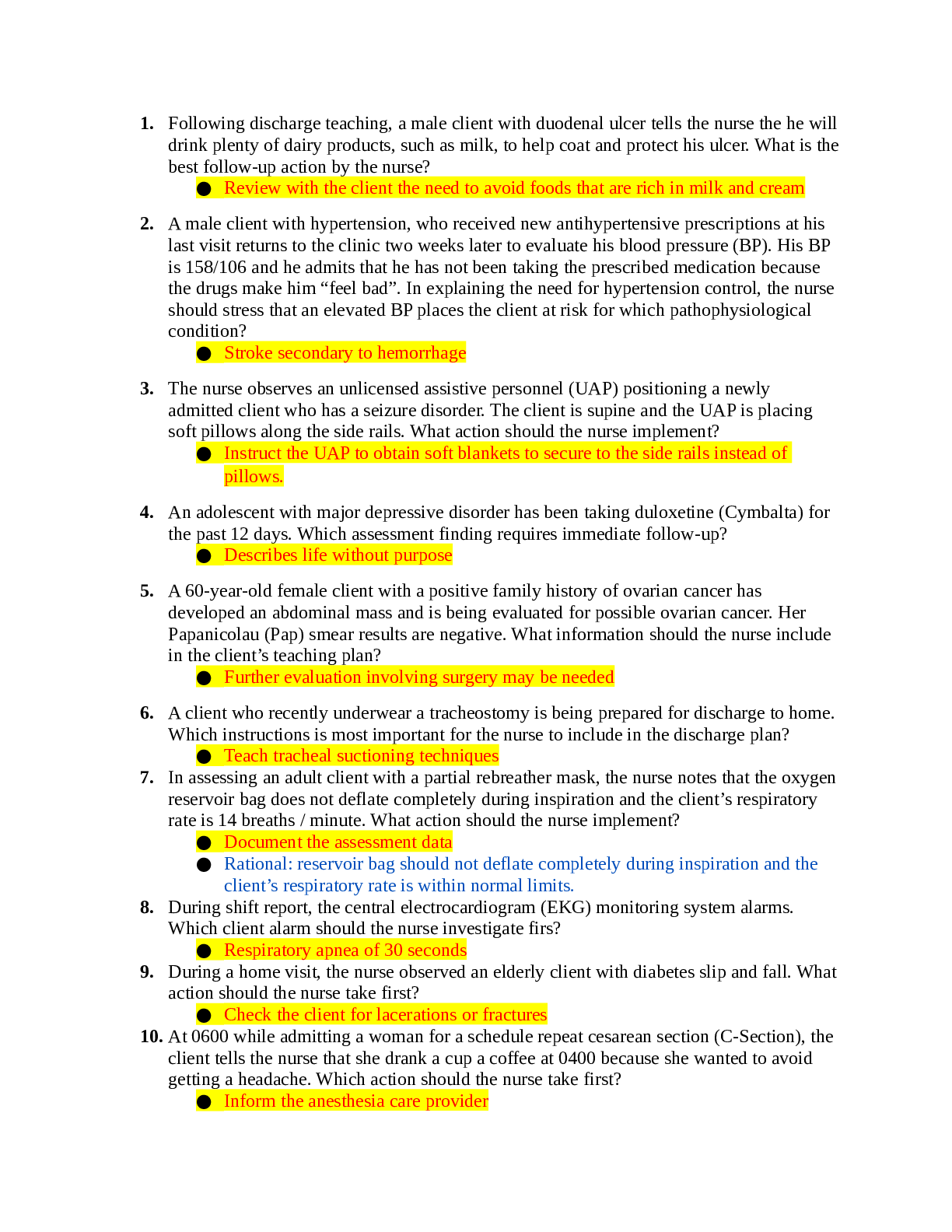
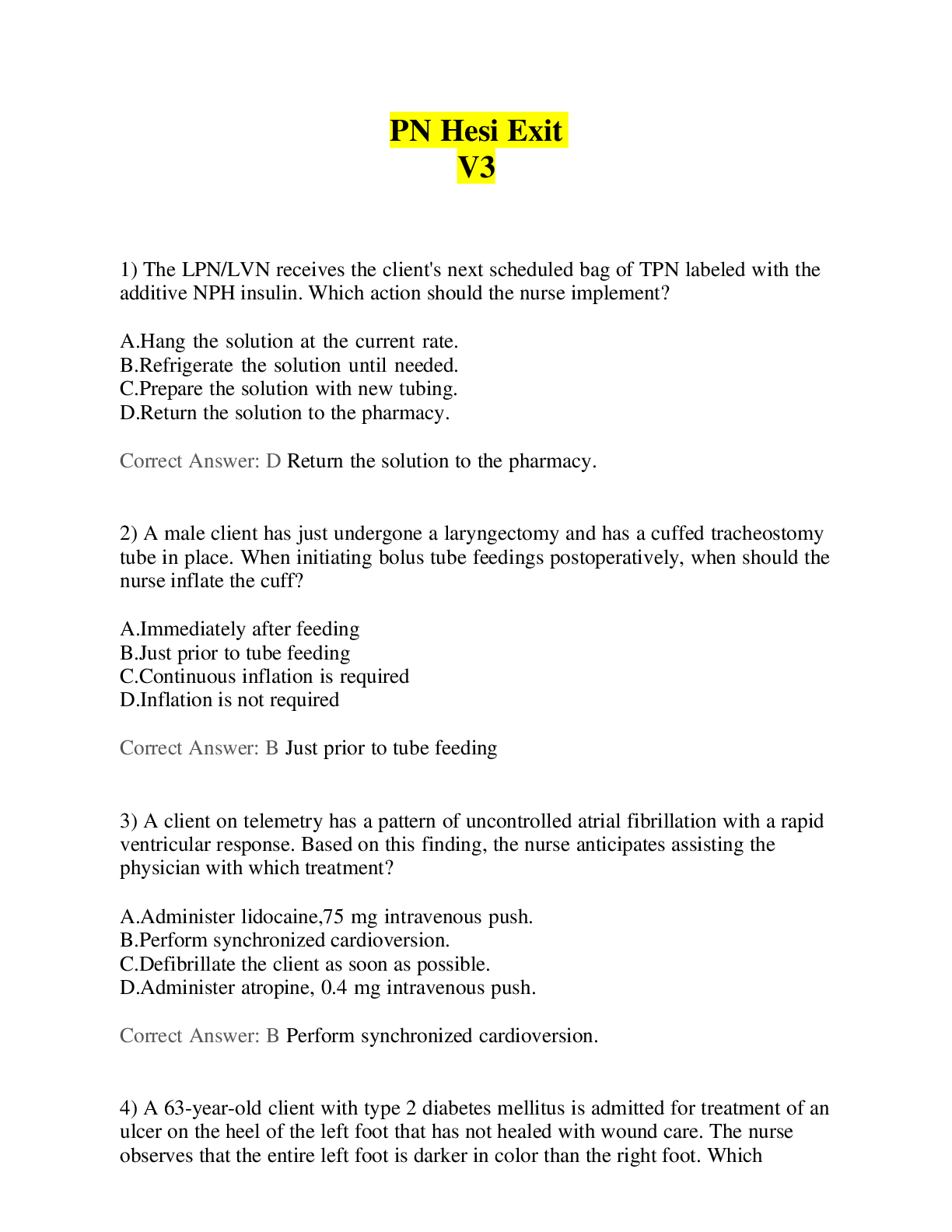
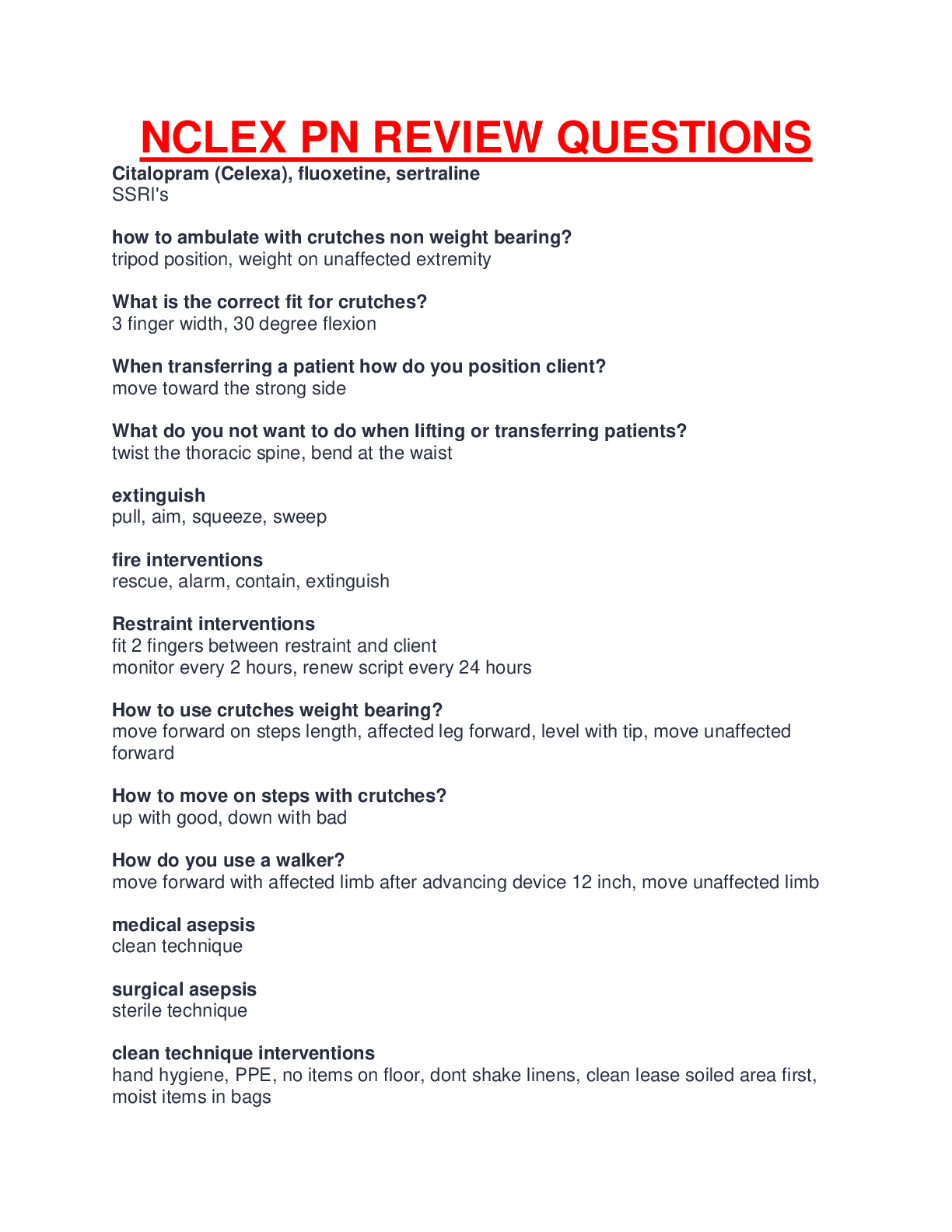
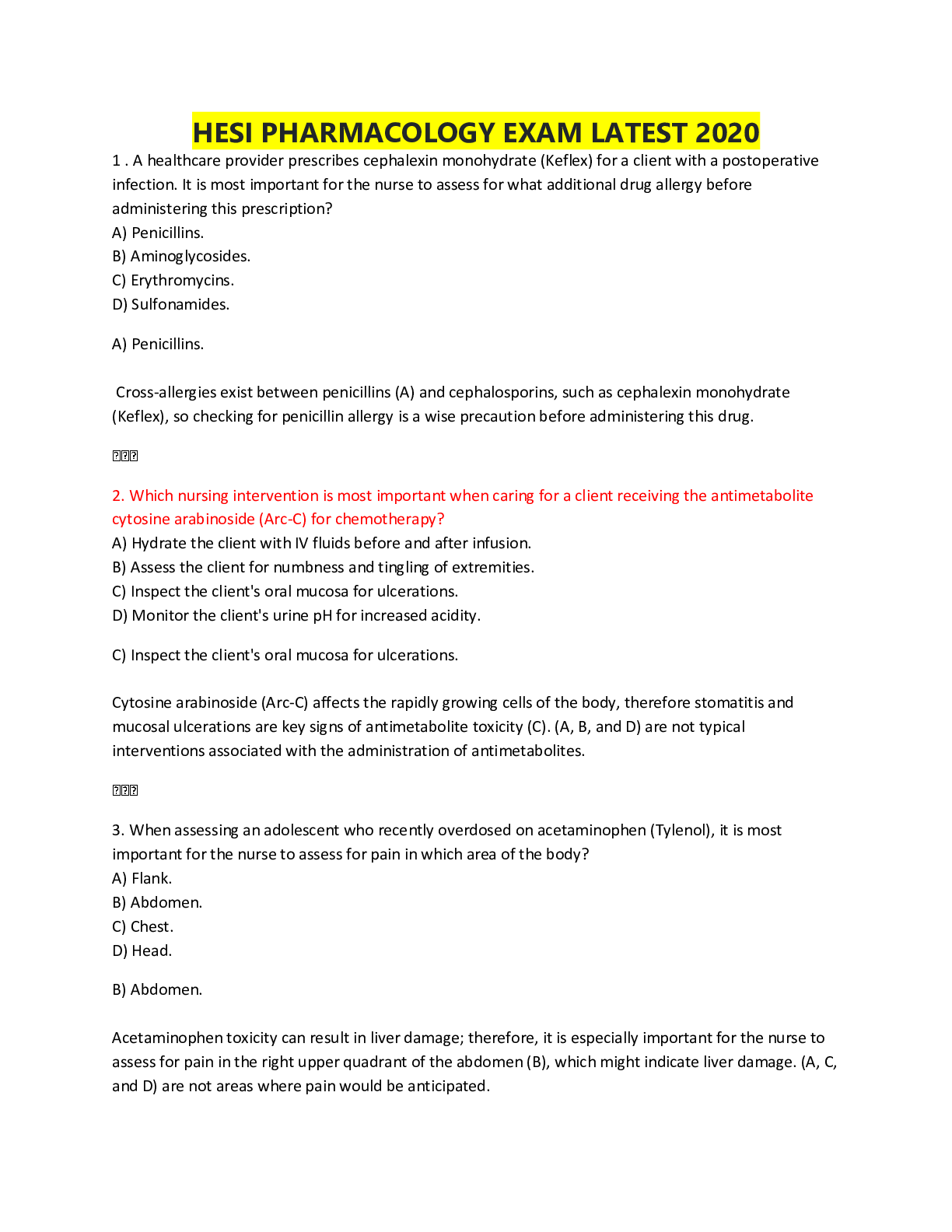
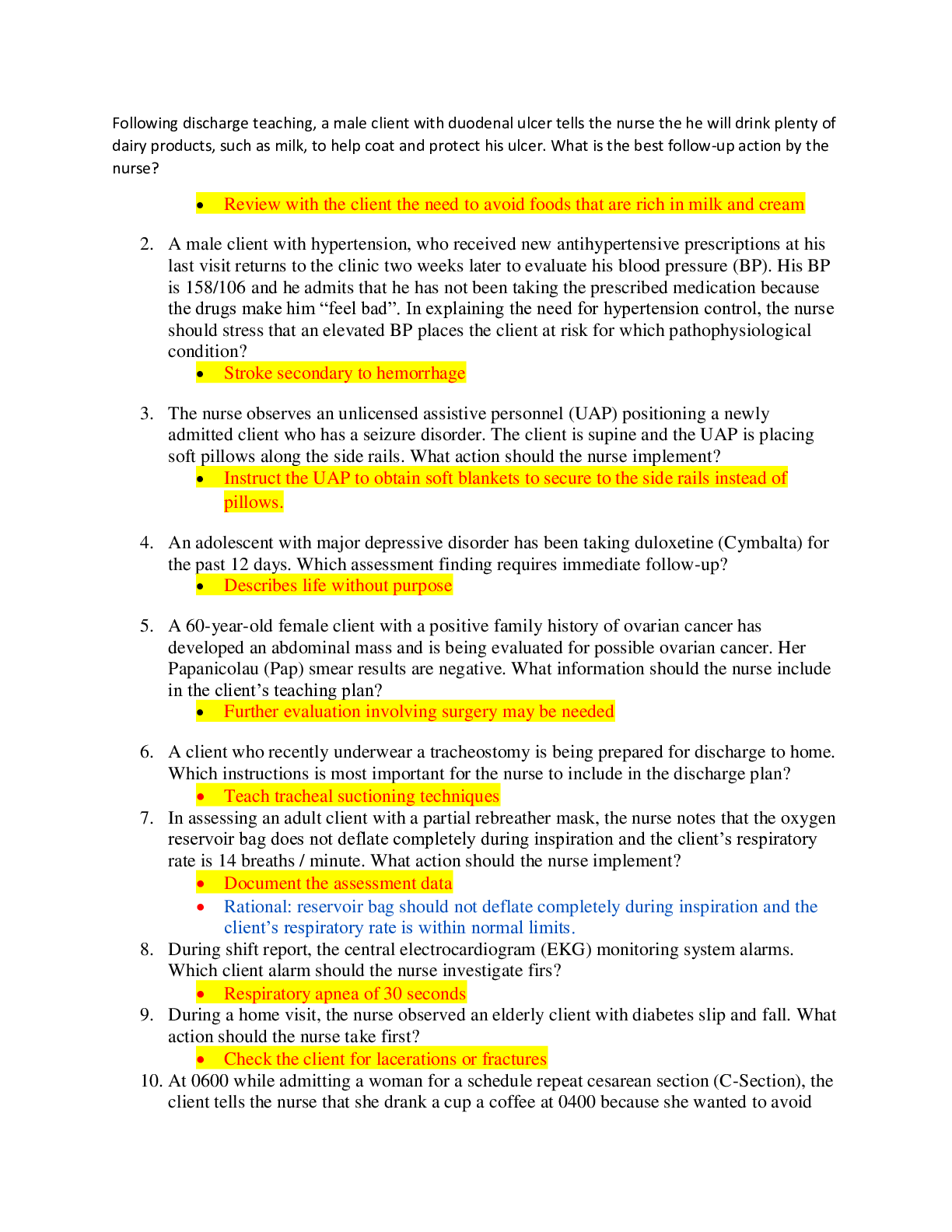
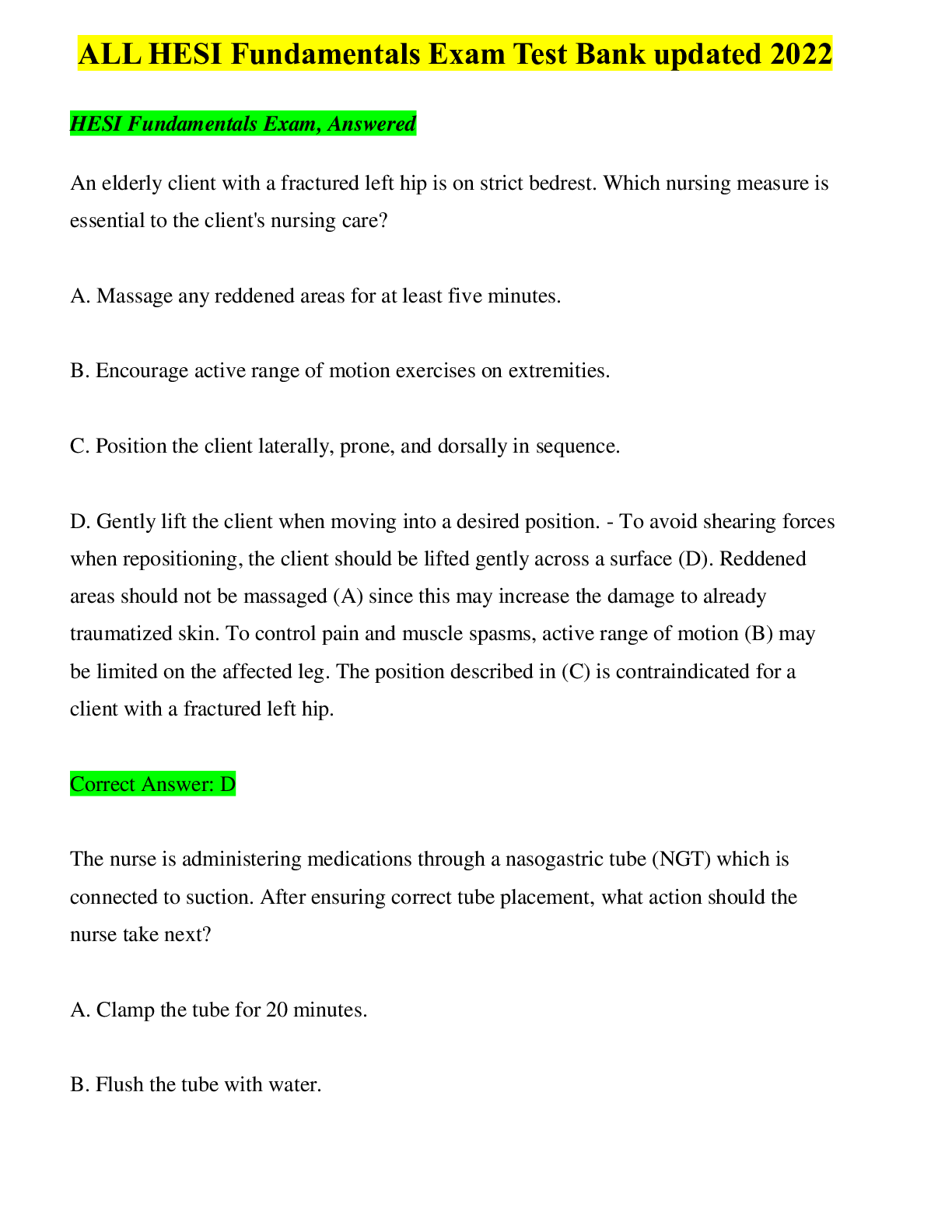

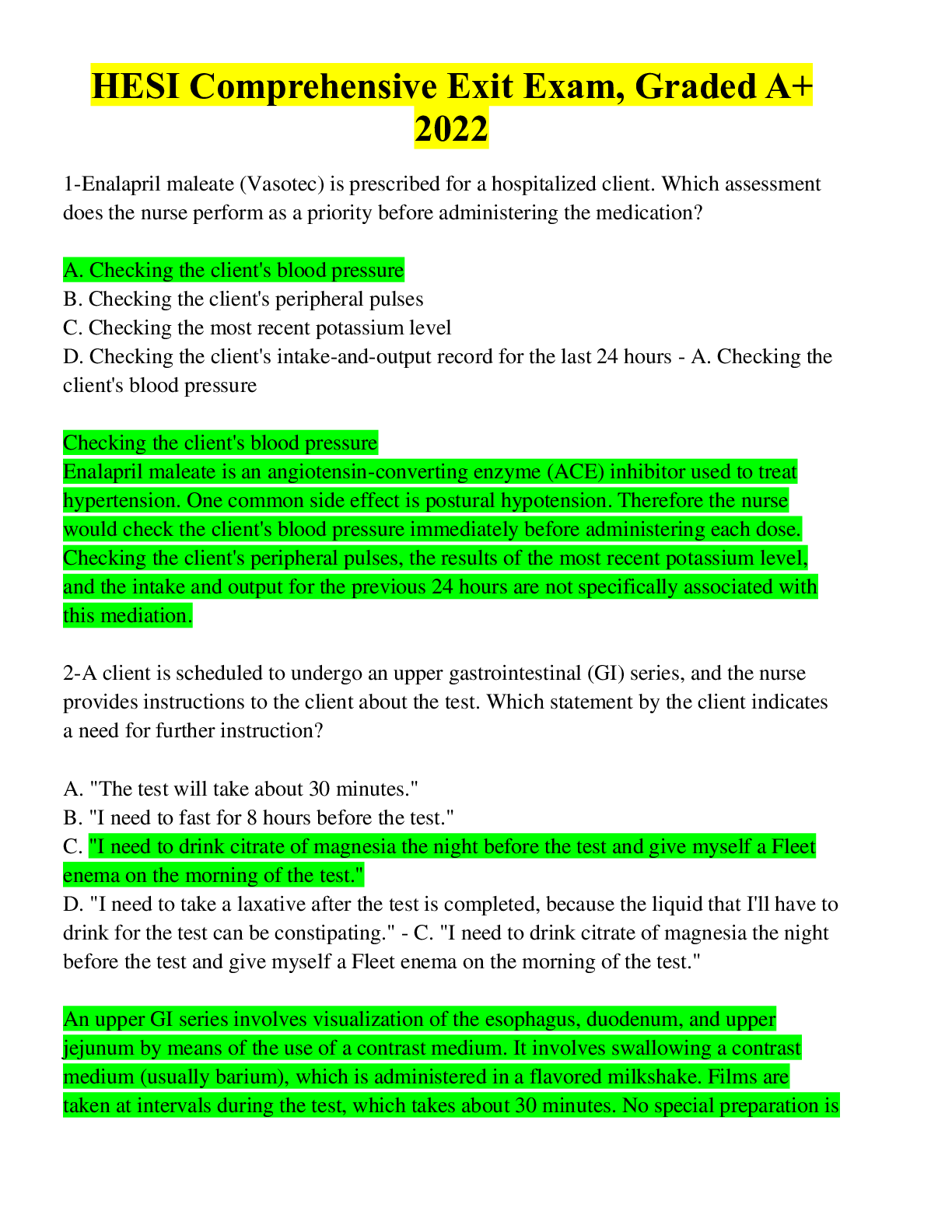

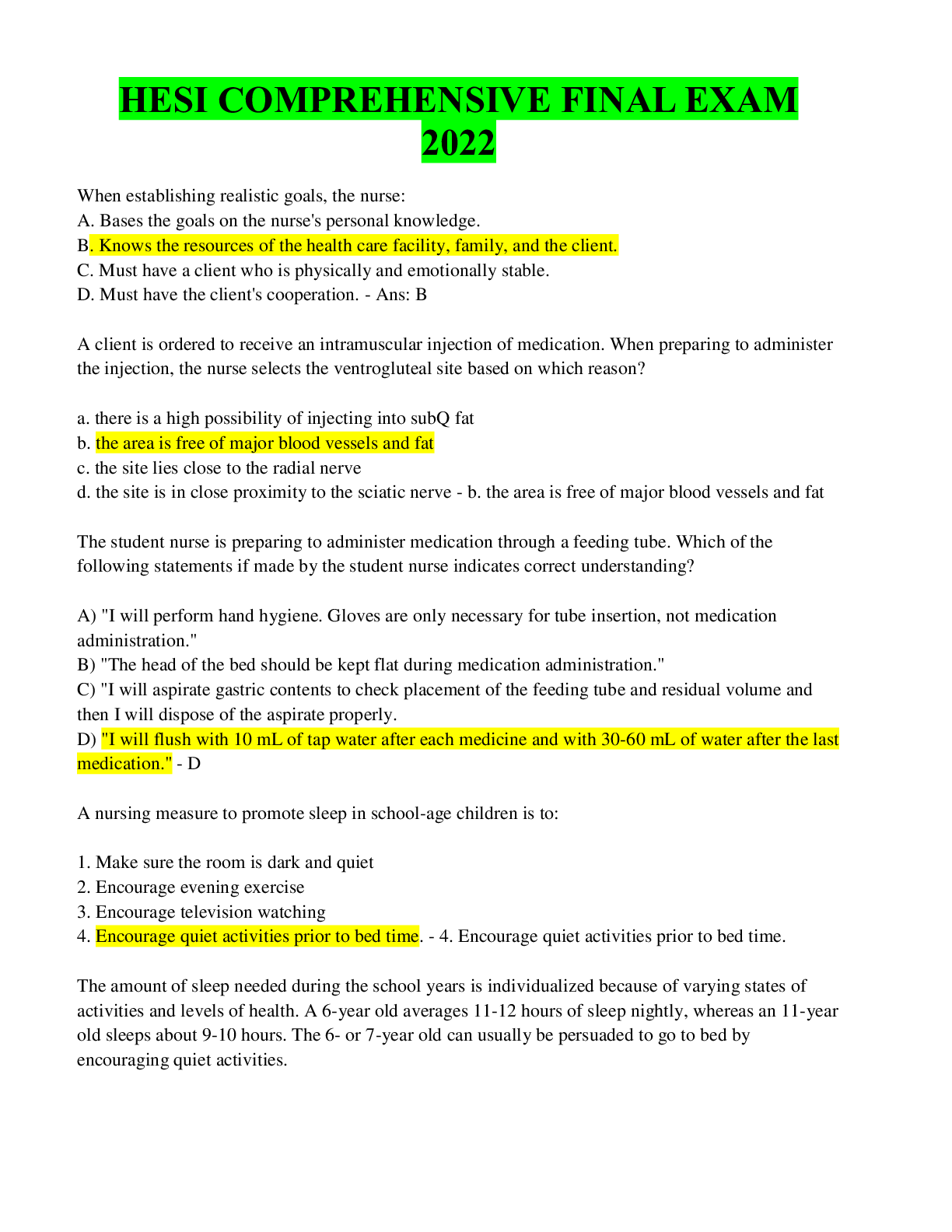
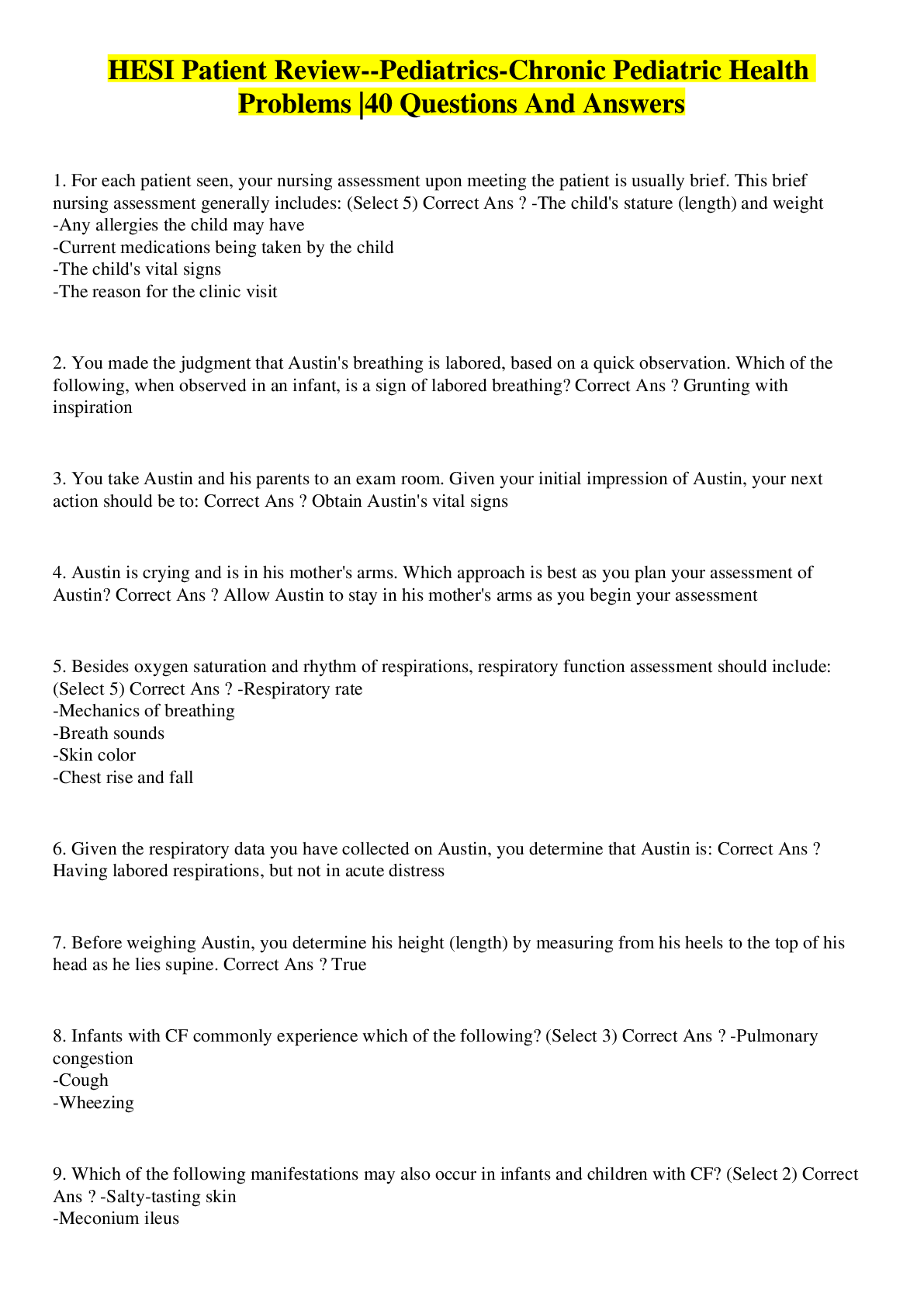
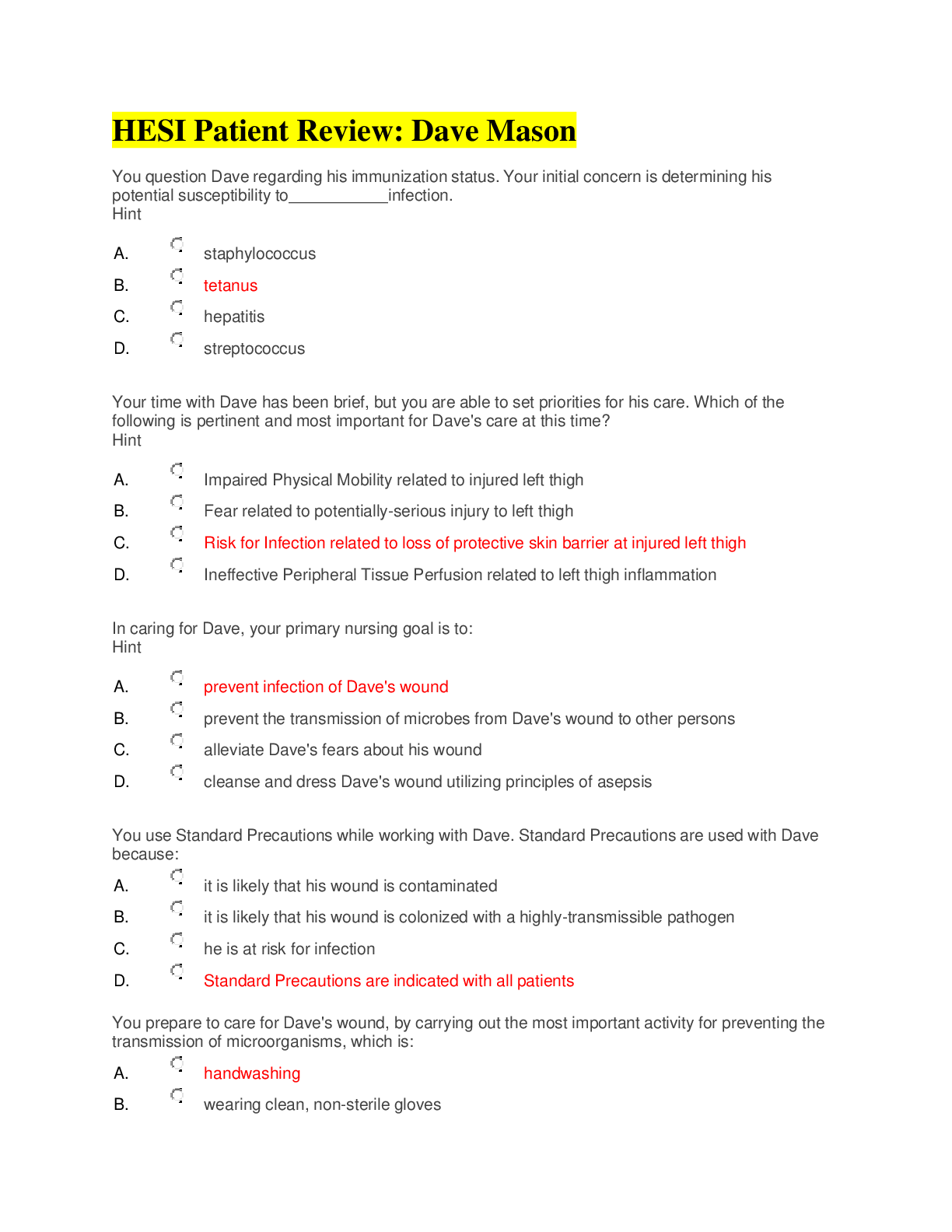

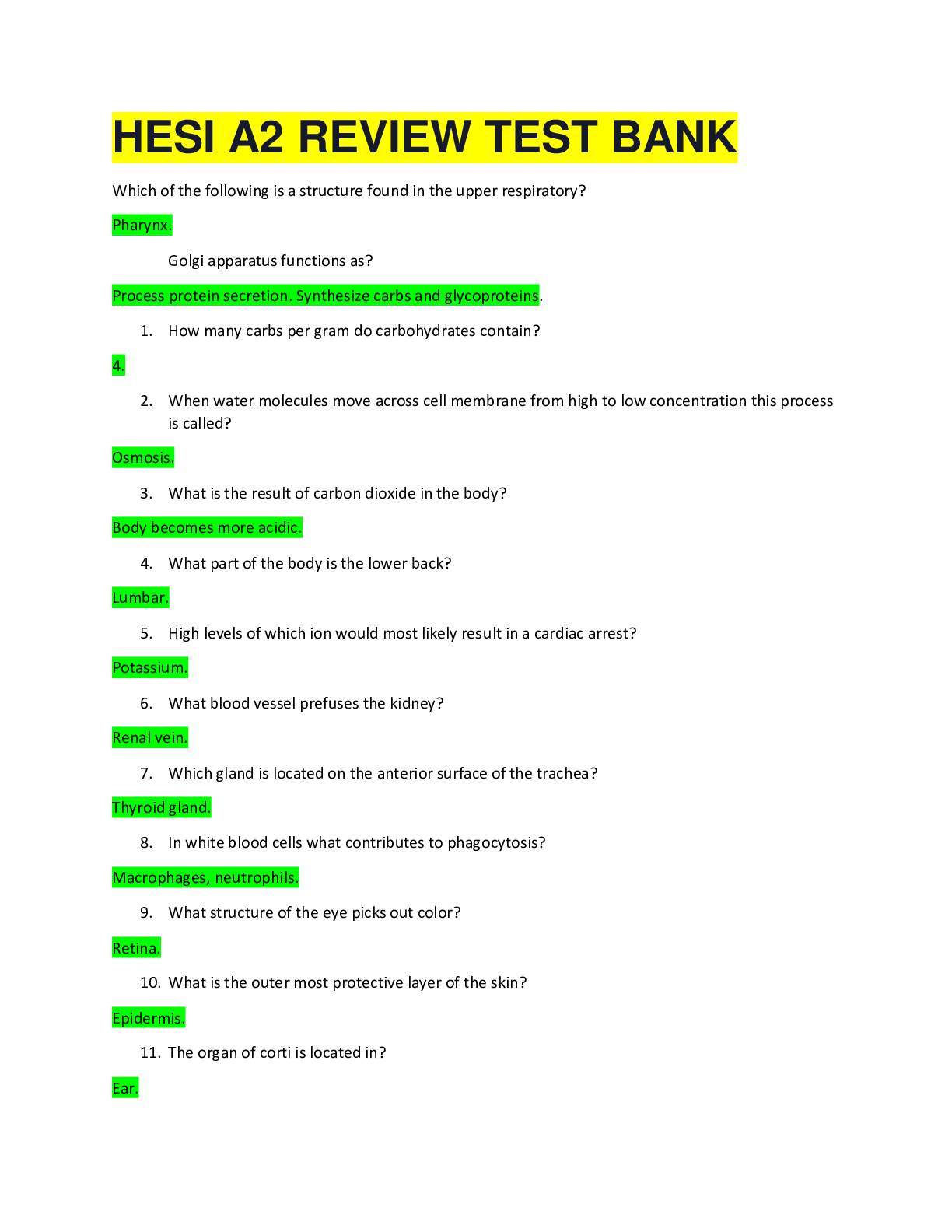
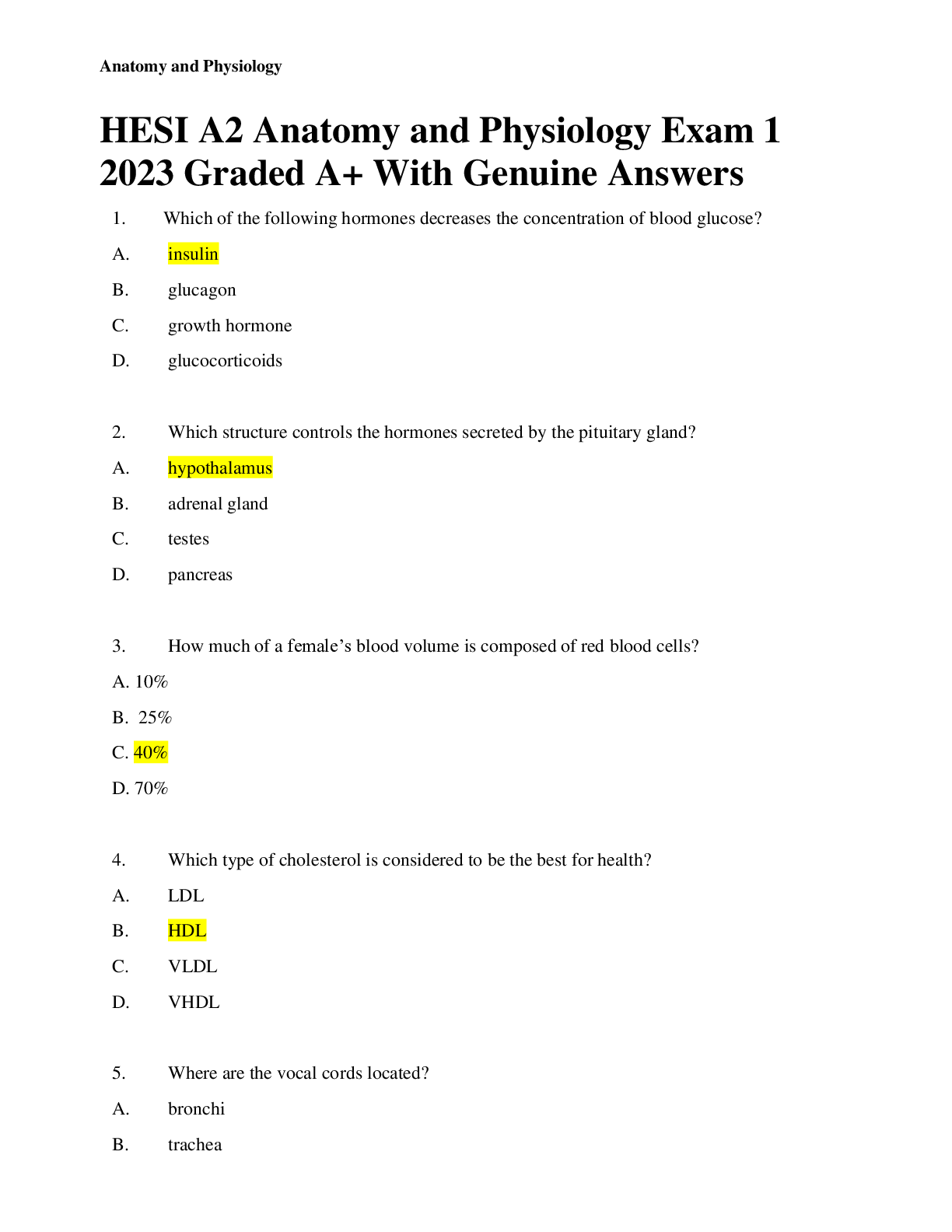
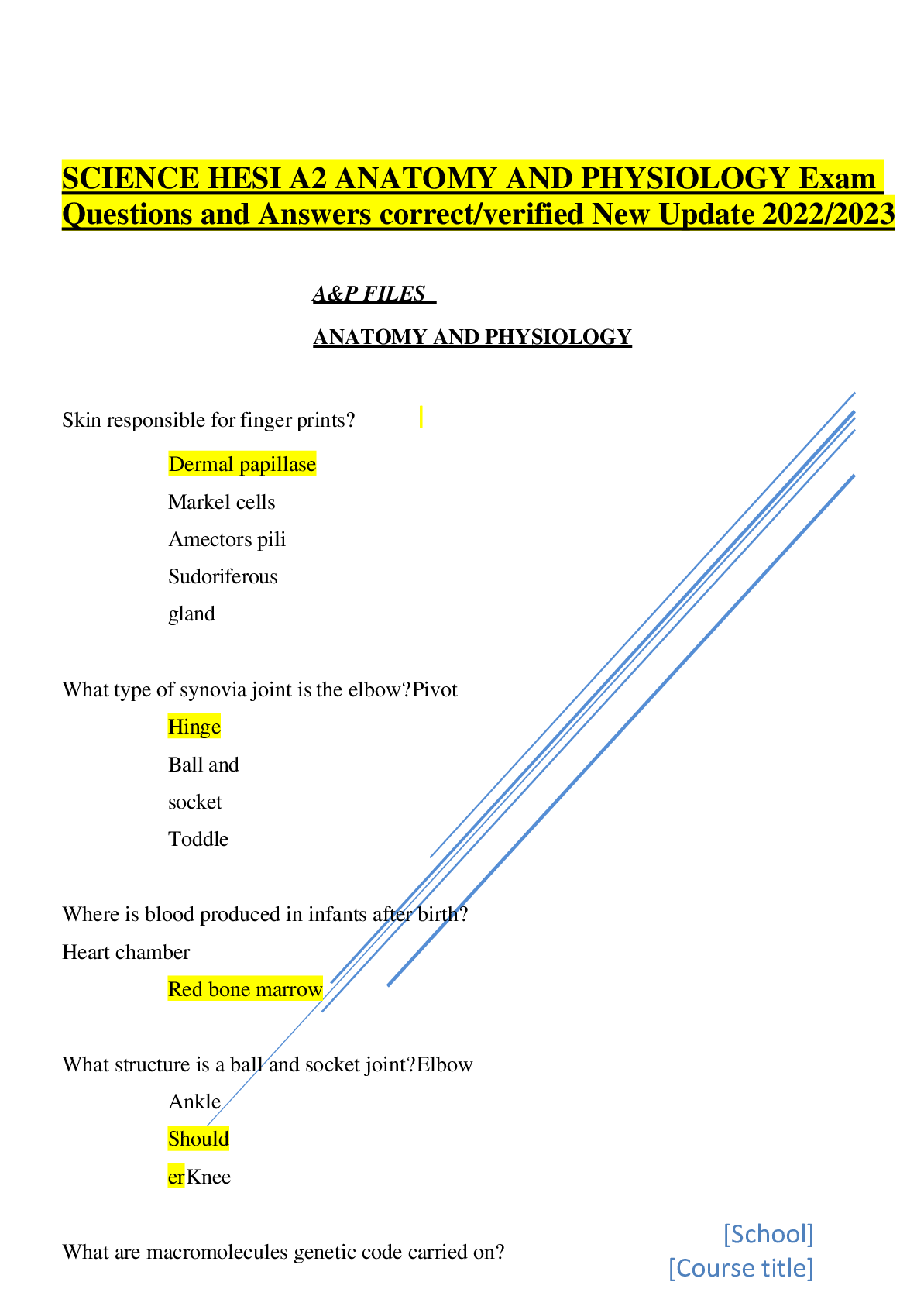
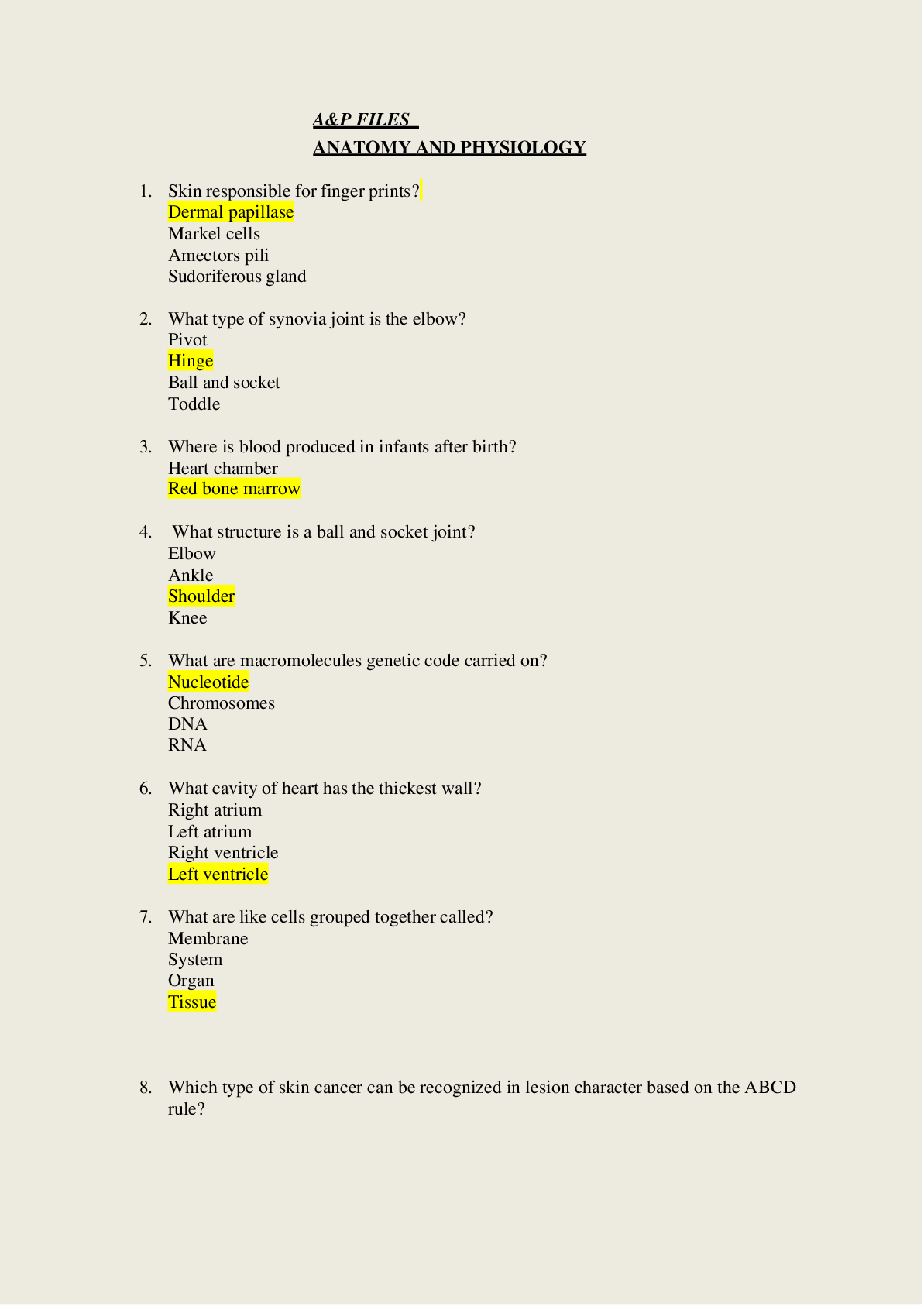
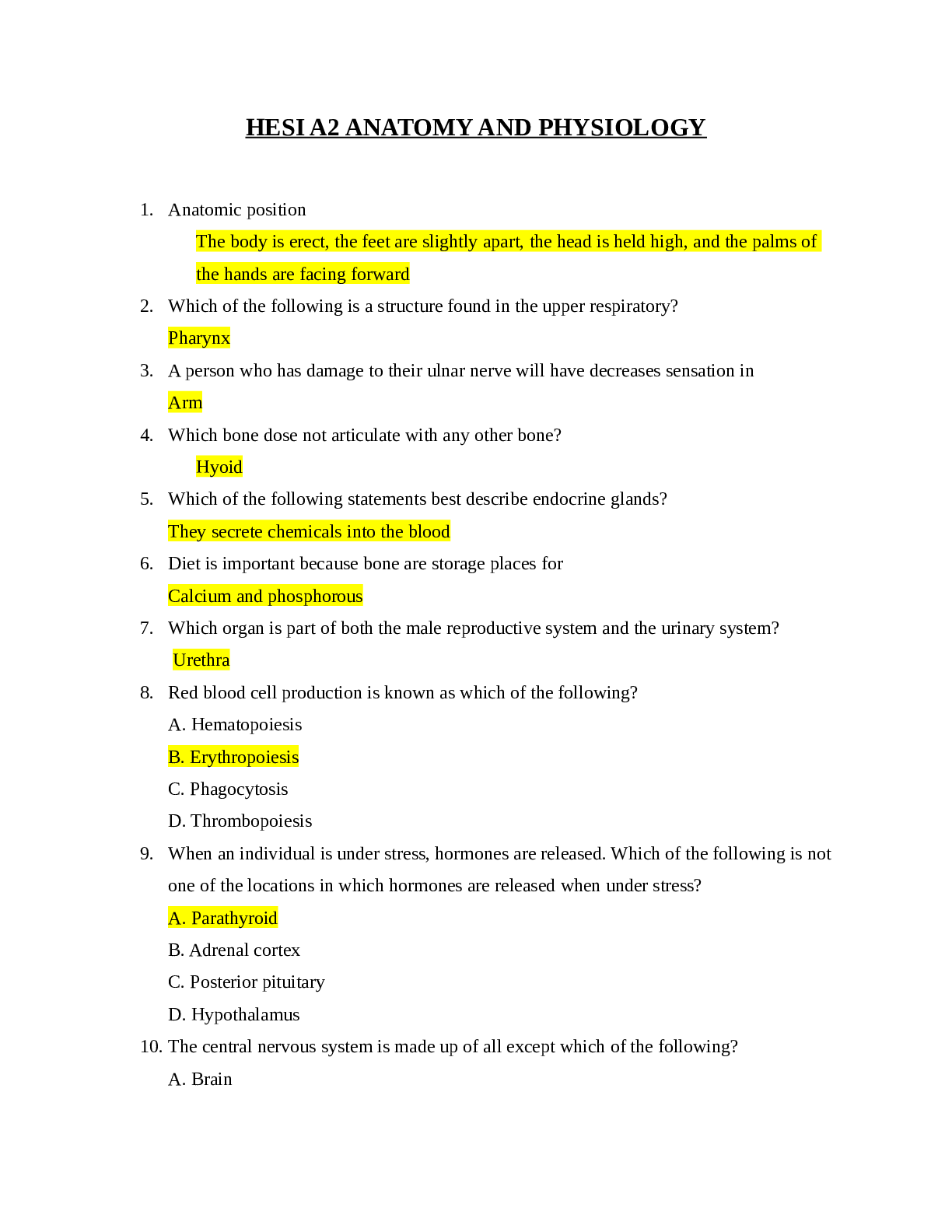
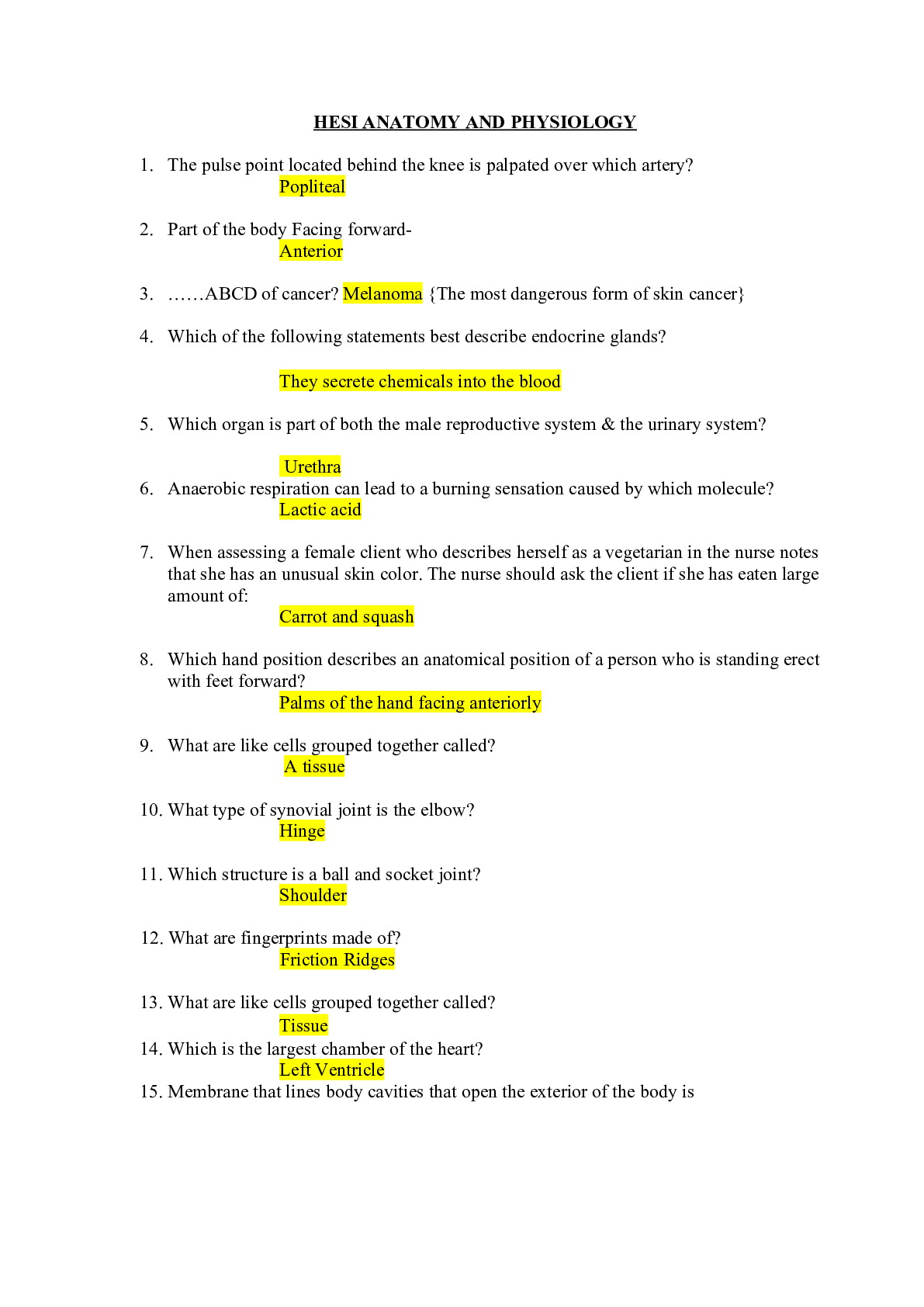
 LATEST QUESTIONS AND COMPLETE SOLUTIONS.png)

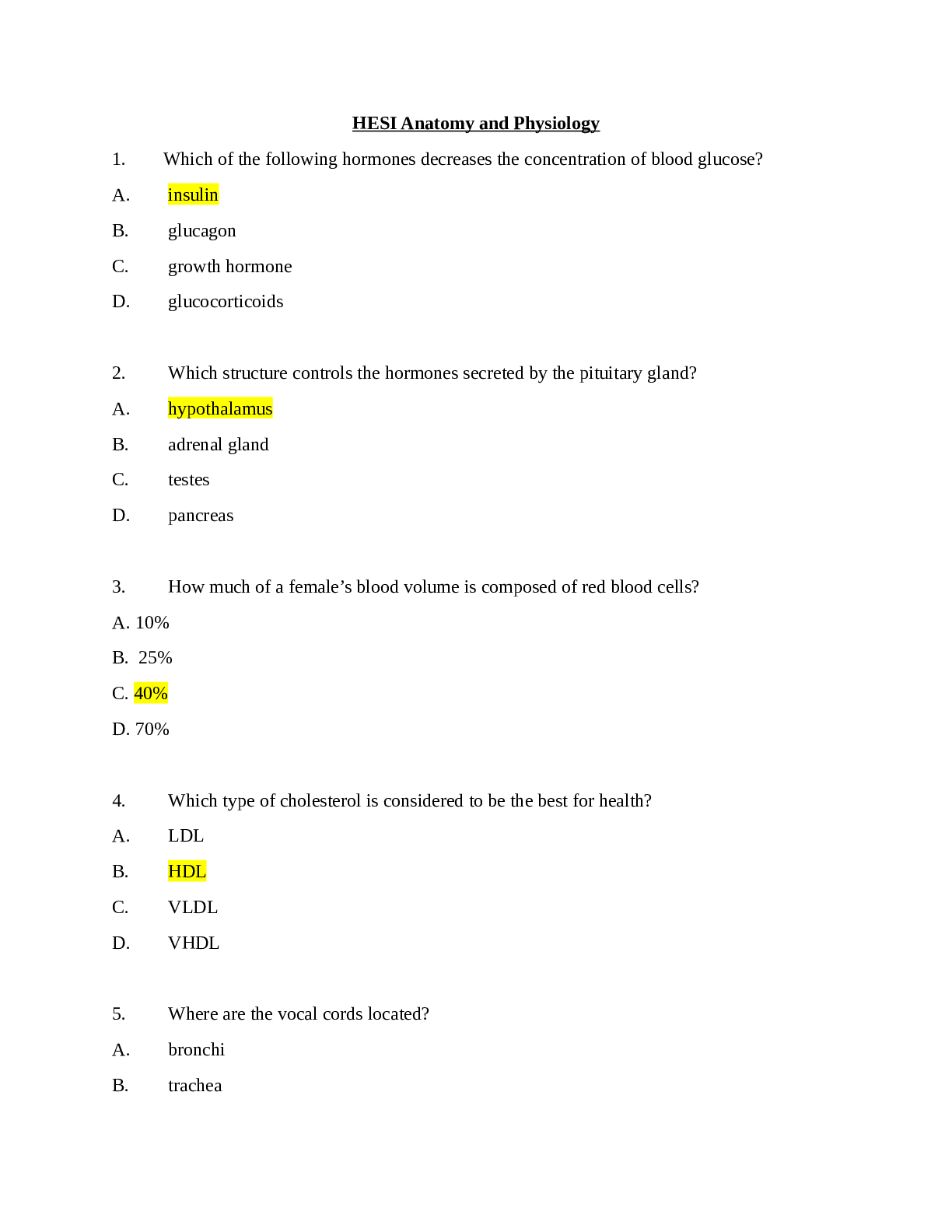
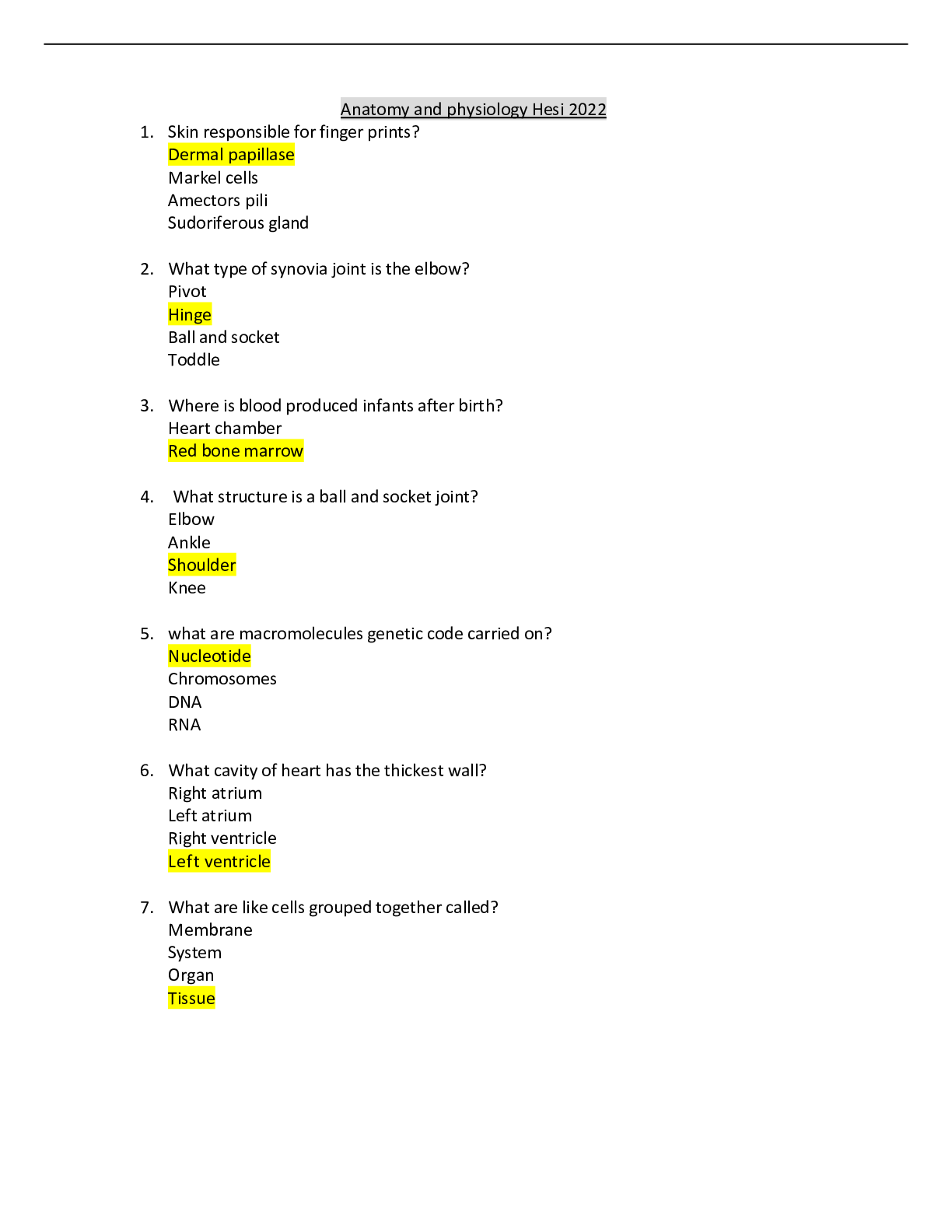
 LATEST GUIDE 2022.png)

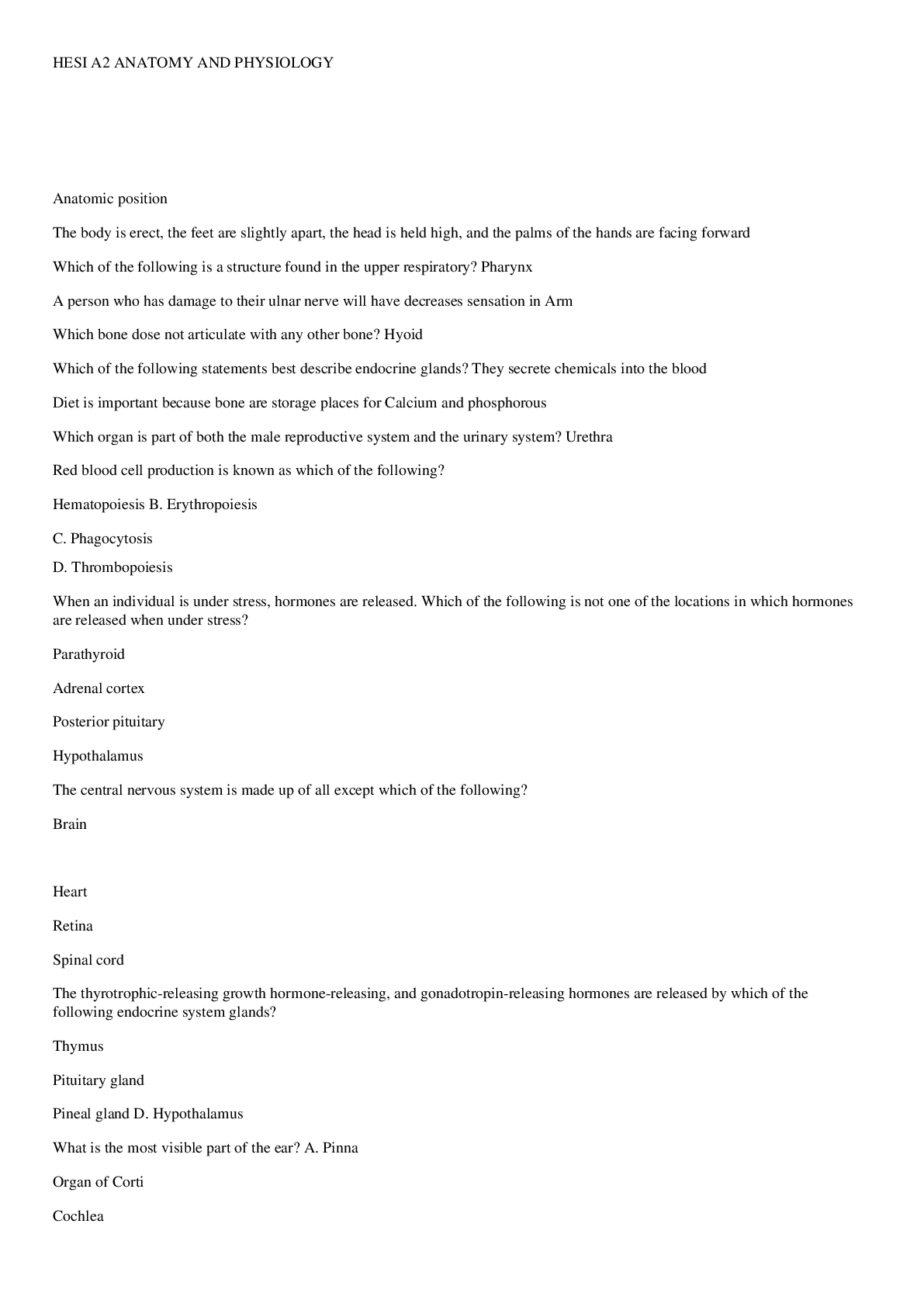

.png)
